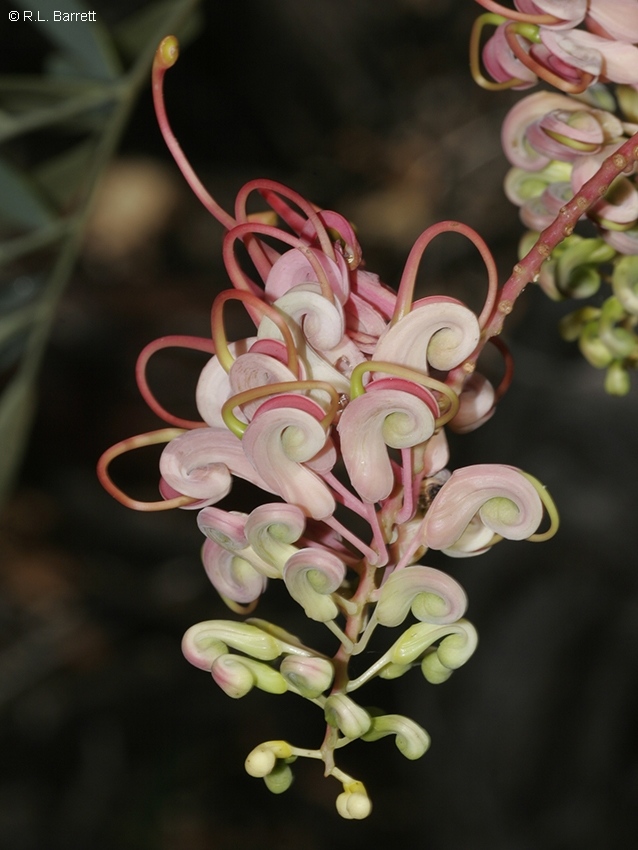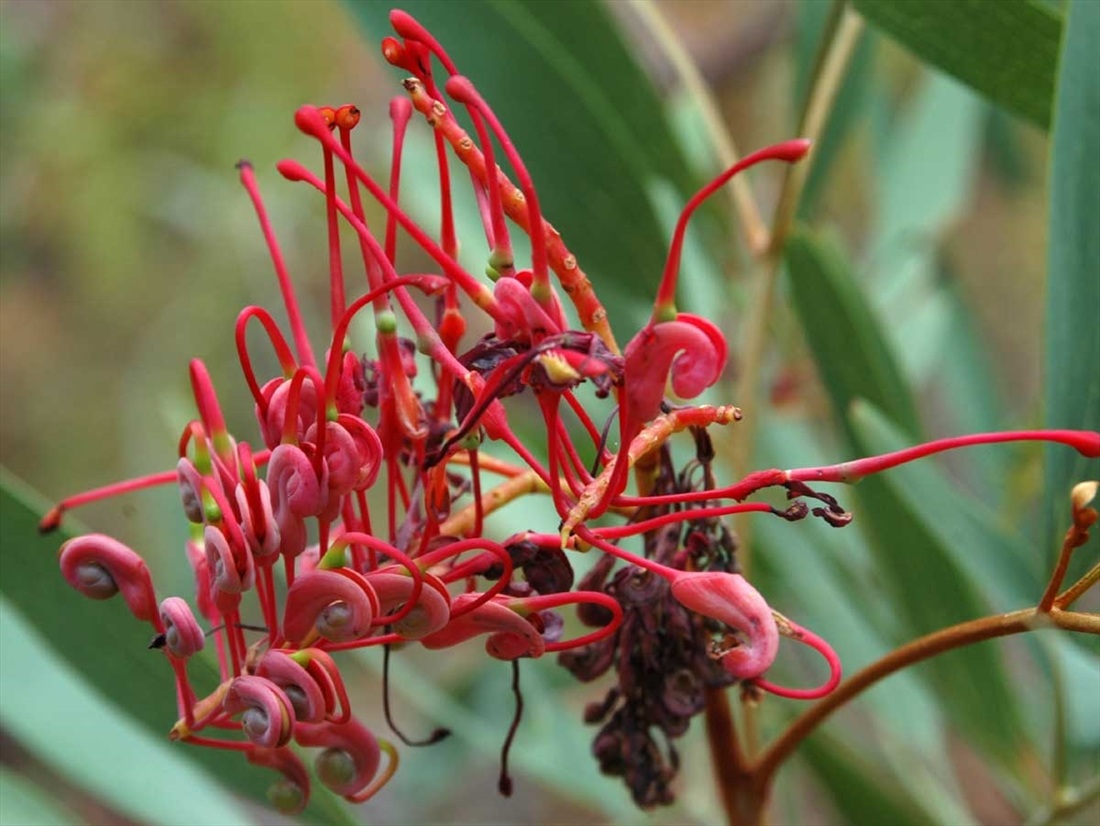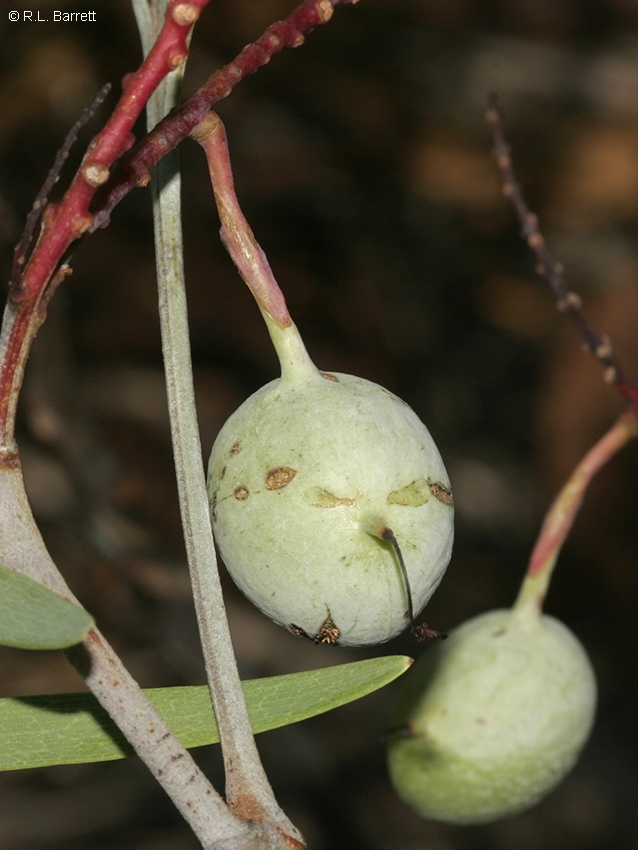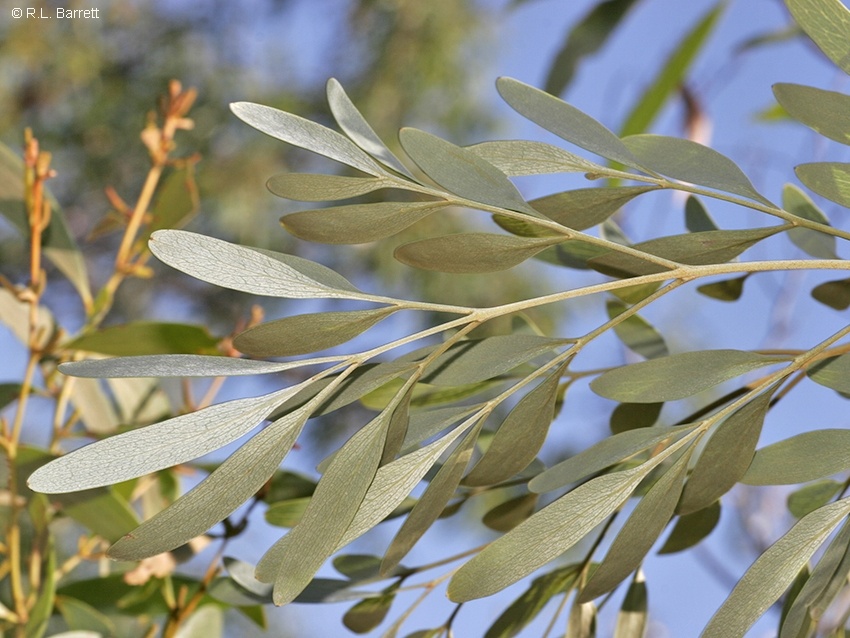Australian Tropical Rainforest Plants - Online edition
Grevillea heliosperma R.Br.







Brown, R. (1810) Transactions of the Linnean Society of London, Botany 10 : 176. Type: In Novae Hollandiae ora septentrionali; Carpentaria: prope littora. (ubi v.v.).
Rock Grevillea; Grevillea, Rock
Usually flowers and fruits as a shrub 3-5 m tall.
Oak grain in the twigs. Terminal buds and young shoots clothed in fine, prostrate, rusty red hairs. Leaflet blades about 11 or 12 per compound leaf, each leaflet blade about 5-13 x 0.7-3.5 cm, +/- longitudinally veined with 3-5 veins slightly more prominent than the rest. Leaflet blades resemble Acacia phyllodes. Tips of the leaflet blades dark, mucronate.
Perianth tube +/- cylindrical, scarcely dilated in the lower half. Tepals hairy on the inner surface particularly on the lower half. Hypogynous gland horseshoe-shaped. Anthers +/- sessile. Ovules 2 per ovary. Stigma +/- lateral near the apex of the style.
Cotyledons +/- spathulate, fleshy, about 11 x 8 mm. First pair of leaves simple, oblanceolate, about 20-25 x 5-7 mm. At the tenth leaf stage: leaf blade simple, linear-lanceolate, apex acute, base attenuate, glabrous on both the upper and lower surfaces. Young shoot and terminal bud clothed in pink or reddish hairs.
Occurs in WA, NT and NEQ (the western gulf country of Queensland). Altitudinal range from near sea level to 300 m (?). Usually grows in open forest but sometimes found in or on the margins of monsoon forest and vine thickets.
Commonly cultivated in parks and gardens for its fast growth and showy red flowers.





